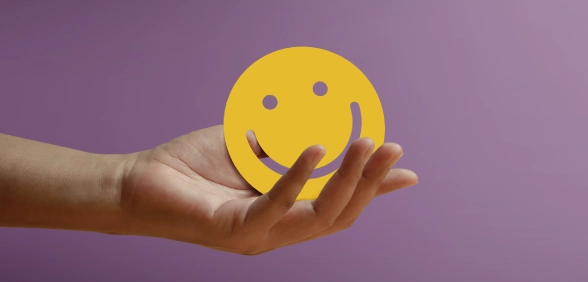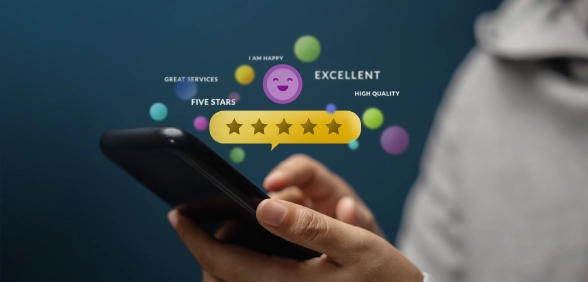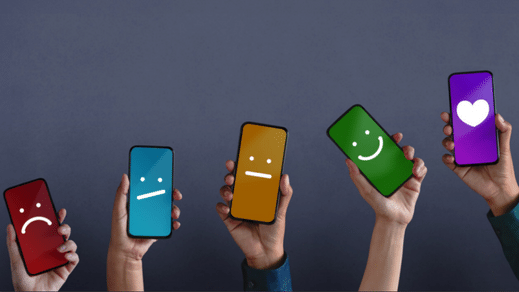Many businesses are familiar with common customer experience (CX) strategies such as personalisation, omnichannel support, closing the loop and so on. These strategies are popular for a reason, and you may have even been employing them in your organisation. They’ve been proven to help create seamless, satisfying experiences for customers. But what if there were other, less conventional and underutilised strategies that could set your business apart? This article examines these strategies, each illustrated with real-world case studies.
10 Unconventional Yet Effective CX Strategies
CX Strategy 1: Anticipatory Experience Design
Anticipatory experience design focuses on solving customer needs before they even recognise them. Businesses can implement this customer experience strategy by leveraging predictive analytics and behavioural insight to create seamless, proactive interactions that enhance customer satisfaction.
Companies that are looking to adopt this method to improve customer experience can look to Dow, a global materials science company, as a model. The business has successfully implemented a data-driven customer experience program that anticipates client demands. Using advanced analytics, the company identifies trends and potential challenges customers may face and uses that opportunity to offer tailored solutions before issues arise. When faced with flight delays, for instance, travelers want to know as early as possible about the delay and why it happened. Anticipating this, United Airlines now texts travellers live weather maps to explain delays. This approach, which predicts what customers need rather than waiting for them to reach out, effectively reduces friction and fosters long-term relationships with clients.
CX Strategy 2: Customer “Pre-boarding”
Compared to traditional onboarding that focuses on familiarising customers with products or services after they make a purchase, pre-boarding is concerned with engaging with customers before the official journey begins. Sephora’s pre-boarding process presents a prime example that other companies can emulate. The beauty retailer offers virtual try-ons and interactive tutorials, which allow customers to test products digitally before committing to a purchase.
The use of this strategy helps customers test a product before doing an actual trial or making a purchase. Also, implementing pre-boarding strategies, such as how Apple lets customers explore new iPhone model features before purchase, allows your business to engage with potential customers early and set the stage for a positive long-term relationship.
CX Strategy 3: Emotional Micro-Moments Mapping
Every customer journey is filled with emotional touchpoints—moments that can significantly enhance loyalty. Emotional micro-moments mapping involves identifying these critical instances and optimising them for a more meaningful connection.
First Direct, a digital banking subsidiary of HSBC, excels in this area by prioritising personalised customer interactions. Instead of treating banking as a transactional process, the company focuses on addressing emotional needs at key moments, such as resolving concerns quickly and offering empathetic support during stressful situations. For example, instead of just notifying users about overdraft limits reached, they offer a solution-oriented support, such as payment plans or alternative account options. This human-centric approach has led to high customer satisfaction and strong brand loyalty.
CX Strategy 4: Friction-Free Silent Support
The best customer support is often the one that customers never need to use. This is the principle behind friction-free silent support, which focuses on designing intuitive products and services that users rarely require assistance. Apple has mastered this concept by emphasising simplicity and user-friendliness in its product design. From seamless software integration to minimalistic interfaces, Apple products are built to function effortlessly right out of the box. This reduces the need for customer service interactions and enhances user satisfaction. Indeed, prioritising intuitive design and eliminating unnecessary complexity lets you empower customers to navigate your offerings with ease.
CX Strategy 5: Contextual Experience Triggers
Customer experiences are more impactful when they align with the real-world environment of the user. Contextual experience triggers maximise this effect by adapting aspects of a product or service to fit local preferences, emotions, or surroundings. Integrating this method into your company’s greater strategy on how to improve customer experience lets your business create deeper, more personalised engagement that resonates with different audiences.
One of the companies that leverages customer experience contextualisation is Starbucks. One of the ways this business carries out this strategy is by crafting a consistent yet locally relevant sensory experience across its global stores. While each store maintains the core Starbucks brand identity, the company adapts certain aspects to reflect local cultures and customer preferences such as traditional architectural influences and region-specific beverages and food items. Knowing that Australia has a mature coffee culture, the company introduced beverages that are more familiar to the local market. It should also be noted that initially, the brand struggled to resonate with Australian consumers due to its standardized, fast-coffee approach, which clashed with the country’s deeply ingrained specialty coffee culture. However, Starbucks has since refined its strategy by shifting its focus toward international audiences and younger consumers who are more open to global coffee trends.
One significant adaptation has been the company’s emphasis on cold and customisable beverages, aligning with a growing demand for iced and flavoured drinks among younger demographics. Additionally, Starbucks has been strategically positioning its stores in high-footfall areas such as shopping centres and tourist hotspots, catering to customers who prioritise convenience and mobile ordering. These strategies have played a key role in the company’s renewed success in Australia, demonstrating how a brand can evolve to meet local preferences while staying true to its global identity.
CX Strategy 6: Reverse Personalisation
Reverse personalisation flips the traditional concept of personalisation on its head. Instead of brands tailoring experiences to customers based on their behaviors and preferences, reverse personalisation allows customers to personalise their interactions with the brand based on their own needs, preferences, and choices. It gives control back to the customer, letting them decide how much personalisation they want, what kind of experience they prefer, and how they engage with a brand.
Netflix is a prime example of reverse personalisation. While its algorithm suggests content based on viewing history, it also gives users control over their experience. Users can create multiple profiles with different preferences, allowing each person to have a personalised experience based on their own input rather than Netflix deciding for them.
CX Strategy 7: Gamified Service Recovery
Customer complaints are inevitable, but turning service recovery into an engaging experience can turn dissatisfaction into loyalty. Gamified service recovery refers to applying game mechanics, such as challenges, rewards, or progress tracking, to complaint resolution. These elements make the process of resolving issues more interactive and less frustrating for customers
For instance, in a study entitled Spinning the Wheel: The Effectiveness of Gamification in Service Recovery published in the Journal of Service Research, the researchers used a spin-the-wheel game to offer compensation to customers. This strategy used a point-based system where customers earn rewards for resolving issues through self-service options, or engage in a tiered system where quicker resolutions unlock special perks. The research found that gamification can have a positive recovery effect when consumers are given a choice or provided with the opportunity to receive full compensation. Incorporating elements of fun and engagement into service recovery in this manner lets you transform a traditionally negative experience into one that reinforces customer commitment.
CX Strategy 8: Anticipatory Personalisation
Anticipatory personalisation involves using data and behavioural insights to anticipate customer emotions and respond proactively to their needs before they even express them. This goes beyond simply predicting what a customer might buy next, as it’s more about understanding how they might feel at different stages of the customer journey and designing interactions that meet those emotional states.
Netflix offers a prime example of this. The company uses predictive empathy by analysing viewing habits to not only suggest content but also adjust the tone of communication based on a user’s recent activity. For instance, if a user has been binge-watching comedies, Netflix may highlight more light-hearted suggestions or even use a playful tone in notifications, aligning with the user’s current mood and enhancing engagement.
CX Strategy 9: Customer-Led Product Reworks
Instead of guessing what customers want, why not involve them directly in shaping products and services? Customer-led product reworks leverage collective feedback to refine and improve offerings, ensuring they meet real user needs. For instance, your business can use a customer experience (CX) solution and conduct automated surveys to determine product design changes to your existing items. Using a Voice of Customer (VoC) program to analyse customer feedback, your organisation can determine which changes to prioritise.
Software company Mixpanel, for example, realised that its products have grown beyond what its interface can handle, and this is becoming a pain point for customers. The company then used input from 1,000 customers to test design prototypes, ensuring that they end up with a final design that is both user-friendly and highly scalable. Acting on customer feedback not only results in higher customer satisfaction but also strengthens brand trust. Allowing customers to have a say in how your products evolve can lead to more meaningful innovations and deeper loyalty.
CX Strategy 10: “Un-Scaling” for Personal Touch
Large companies often struggle to maintain a personal connection with customers, but “un-scaling” ensures that businesses feel approachable despite their size. To demonstrate this process, take a look at the example set by First Direct. Unlike traditional banks that rely heavily on automated responses, First Direct prioritises human interactions, ensuring that customer inquiries receive quick and personalised attention.
This approach makes customers feel valued and heard, fostering loyalty. By integrating personal touchpoints into large-scale operations, you can create a customer experience that feels exclusive and individualised, even in a mass-market setting. Yes, it is important to balance costs, but sometimes the indirect costs such as reduced churn, increase in word of mouth about your brand can more than easily justify the cost.
How a Customer Experience Platform Can Help You Find the Right Unconventional CX Strategy
There’s no question about the impact of adopting popular CX strategies, but the unconventional approaches discussed above can unlock hidden opportunities to elevate customer experience, drive loyalty, and set your brand apart from the competition. By thinking outside the box and leveraging these lesser-known tactics, businesses can create meaningful interactions that leave a lasting impact.
By tracking customer feedback, a CXM platform can help businesses pinpoint which strategies align best with customer expectations. For instance, if customers express a need for more control over their interactions, reverse personalization can empower them to shape their own experiences. If complaints about unresponsive support staff are common, investing in friction-free silent support could make a difference. Similarly, if customers seek a more immersive brand connection, sensory branding might be the key to engagement.
With the right data-driven insights, companies can implement unconventional strategies with confidence, ensuring that every CX innovation directly addresses customer needs and enhances brand loyalty.







